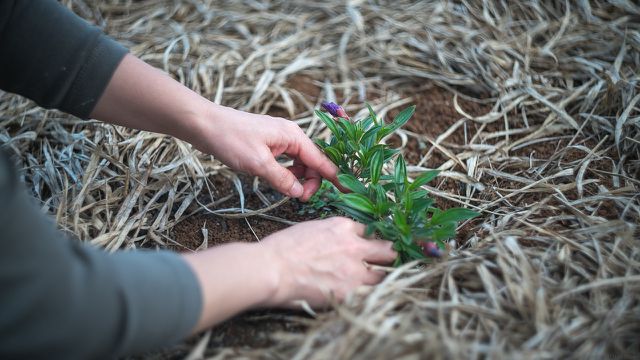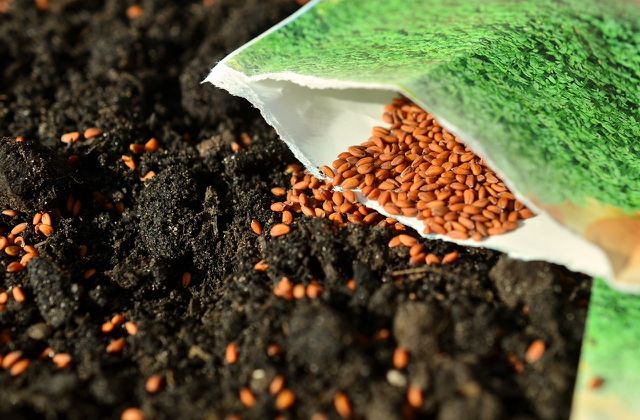
Green manuring is a real alternative to keep the soil fertile. But what is behind it? What are the advantages of green manure and how does the method work?
Contents
- 1 The principle of green manuring
- 2 What green manuring brings
- 3 Green manure for different purposes
- 4 1 green manure for better soil
- 5 2 green manure as erosion control
- 6 3 green manure for nitrogen and nitrate
- 7 4 green manure for soil loosening
- 8 5 green manure against weeds
- 9 Step by step to green manure
- 10 Step 1: Sowing between March and October
- 11 Step 2: Incorporate and mulch
- 12 How does green manure work in the fall?
- 13 Author
The principle of green manuring
In autumn, most beds are withered and harvested. Vegetables, fruits and herbs need a lot of nutrients and leave the soil depleted. Green manuring can help: The natural way to fertilize improves the soil, prevents disease and protects the soil in winter. In the fall, green manure acts like a wellness cure. Your beds can recover over the winter and are ready to be replanted in the spring.
Conventional fertilizers, on the other hand, can destroy the soil. Especially critical are inorganic fertilizers like you’ll often find in garden stores. Over-acidification of the soil and loss of biodiversity are consequences of the wrong use of fertilizers. However, your vegetable garden needs nutrients to thrive. Green manuring is a good alternative.
In accordance with the permaculture principle, you consider which plants influence each other optimally. In this way, you sow suitable plants that raise and balance the nutrient content in the soil – and chemical fertilizers become superfluous. Your garden will be perfectly prepared for any time of the year. This is how the principle works:
Green manures like lupines and other butterfly plants convert nitrogen from the air into nitrate. This allows the roots to absorb nutrients.
Another important property of green manures is that the plants loosen the soil through their deep roots. Thus, digging becomes unnecessary.
After the plants have died, they provide earthworms and co. with food and thus support humus formation.
Green manuring is part of a cycle that strengthens the garden’s ecosystem.
What green manuring brings

Green manures can do more than just provide nutrients to the soil. What looks like a wild field is actually a well-designed interaction of your green manure and vegetable or fruit plants. These are the benefits of green manuring:
- Nutrient supply to the plants
- Loosening of the soil
- Insects are attracted by flowering green manure – fruit trees benefit from this.
- After dying, a mulch layer is formed.
- Pests in the soil can be contained by student flowers, for example.
- No siltation due to plant cover firming the soil.
- No “weeds” because empty spots are planted.
- Water can be better stored thanks to loose soil.
You can get seeds for your green manure for example at Bingenheimer Saatgut in organic quality and without genetic engineering.
Green manure for different purposes
1 green manure for better soil
Winter rye is a popular green manure. It aerates and loosens the soil, leaving fine crumbly soil. It also prevents weeds from establishing. It is especially good for beds with potatoes, beans or cabbage. Winter rye is not compatible with corn.
Alfalfa and various clovers are also good green manures. Their roots loosen the soil, accumulate nitrogen and stimulate humus formation. Butterfly weeds are not compatible with other legumes.
2 green manure as erosion control
In winter, soil often lies fallow and is eroded, washed away or silted up. A green manure prevents erosion by firming the soil.
Green manure plants that protect against erosion include:
- Clover-grass mixtures
- Ryegrass
- Chinese cabbage vegetables
- Spelt
3 green manure for nitrogen and nitrate
After the summer, most of the nutrients in the soil are depleted. With green manure you can quickly supply the soil with nitrogen again in the fall.
The following plants are suitable for this:
- Chickweed
- Yellow mustard
- Lupine
- Vetch
- Pea
- Clover
- Beans
- Together with bacteria, they fix nitrogen from the air in the soil. There they convert it into nitrate.
4 green manure for soil loosening
Plants with long root systems are suitable as green manures to loosen solid soils. They penetrate deep layers and dig up the soil properly in the process.
These plants are suitable as green manures for loosening the soil:
- Oil radish
- Alfalfa
- Lupines
- Wintterrape
- Field beans
5 green manure against weeds
Some plants act as green manures to prevent weeds from spreading. To protect your soil from weeds in winter, perennial clovers and various grasses such as ryegrass or European ryegrass are suitable.
Step by step to green manure

Green manuring can be divided into two major steps: The sowing and the incorporation.
Step 1: Sowing between March and October
First remove the weeds.
Now work the soil with the cultivator to loosen it up.
Now you can spread the seeds generously. Either by hand or with the spreader, depending on how large your area is.
To integrate the seeds well into the soil, you should work the seeds in again with a hay rake.
Step 2: Incorporate and mulch
Before the seed matures, you should mow down the green manure plants.
Leave the mowed plants on the ground so they can rot.
And this is how the plants become fertilizer:
Depending on the type of plant, leave your green manures for five to ten weeks before mowing them down and incorporating them.
If the plants are not hardy, you don’t have to mow them down, provided they were sown late. They will freeze before seed ripens and will not be mowed down and worked shallow into the soil until spring.
After three to four weeks, you can re-till the bed.
How does green manure work in the fall?
Green manure in the fall works both above and below ground:
Above ground, the plants protect the soil from drying out or being washed out by rain. In addition, when the soil is covered with green manure plants, it is not eroded by strong winds.
Underground, the roots of green manure plants dig up the soil. They penetrate even into deep layers of soil. In this way, the soil is better flushed by water and can store it.
When you work the plants into the soil as green manure, it receives additional nutrients. It also activates important soil organisms that decompose the plants. In this way, you create a healthy soil culture.
In spring, your bed is perfectly prepared for new plants thanks to green manure – and without any artificial fertilizers.

